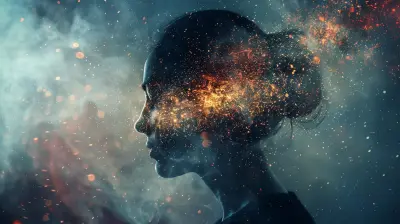Women and PTSD: Gender Differences in Trauma Responses
31 August 2025
Post-Traumatic Stress Disorder (PTSD) doesn’t discriminate. It affects people of all ages, backgrounds, and genders—but when you zoom in, something interesting happens. Women and men can respond very differently to trauma. In fact, research shows that women are not only more likely to experience PTSD, but their symptoms often play out in unique ways compared to men.
So what gives? Why do these gender differences exist? And more importantly, how can understanding them improve mental health support for women?
Let’s unpack this together.
What Is PTSD, Really?
Before we dive into the gender stuff, let’s make sure we’re on the same page about what PTSD is.PTSD is a mental health condition that can kick in after someone experiences or witnesses a traumatic event—think natural disasters, serious accidents, assault, war, or any situation where safety feels massively threatened. It’s more than just feeling shaken up for a while. PTSD can mess with your sleep, your emotions, your thoughts, and your daily life... sometimes for years.
Common symptoms include:
- Flashbacks and nightmares
- Avoidance of reminders
- Emotional numbness
- Hypervigilance (always being “on edge”)
- Irritability or angry outbursts
But here’s the kicker: not everyone who goes through trauma develops PTSD. So why do some people, especially women, seem to be more vulnerable?
Women and PTSD: The Numbers Don’t Lie
Let’s talk stats for a second.Studies show that women are about twice as likely as men to develop PTSD. According to the U.S. National Center for PTSD, around 10% of women will experience PTSD at some point in their lives, compared to about 4% of men.
That gap is huge—and not just a statistical footnote. It reveals something deeper about how trauma interacts with gender.
But wait… aren’t men exposed to more traumatic events overall, like combat or physical assaults?
Yes, they are. But here's the plot twist: women are more likely to experience certain kinds of trauma that are highly correlated with PTSD.
Types of Trauma Matter
Not all trauma is created equal. The type of trauma someone experiences plays a big role in whether they develop PTSD.Women are more likely to experience:
- Sexual assault
- Childhood sexual abuse
- Intimate partner violence (IPV)
- Emotional abuse
- Repeated or prolonged trauma
Men, on the other hand, are more often exposed to physical violence, accidents, or combat-related trauma.
Here’s the rub: Interpersonal traumas—like sexual assault and domestic violence—are more personal, more violating, and often more stigmatized. These are the kinds of trauma that tend to leave deeper emotional scars.
So while men might go through more traumatic incidents overall, the nature of the trauma women face often hits harder emotionally—and that’s where PTSD sinks its teeth in.
How Women Experience PTSD Differently
Okay, so women are more likely to develop PTSD. But how does it actually show up for them?Let’s break it down.
1. Emotional Intensity
Women with PTSD often report stronger emotional responses—things like extreme anxiety, sadness, and fear. They tend to internalize trauma, leading to depression or guilt, whereas men are more likely to externalize it (think anger or substance abuse).2. Avoidance vs. Hyperarousal
Both men and women can experience avoidance and hyperarousal, but studies suggest women often lean harder into avoidance, especially emotional avoidance. They might steer clear of reminders, shut down emotionally, or isolate themselves from loved ones.3. Co-Occurring Disorders
Women with PTSD are more likely to develop co-occurring mental health issues, particularly depression and eating disorders. Men with PTSD, by contrast, often struggle with substance abuse.4. Flashbacks and Nightmares
Women report more re-experiencing symptoms like intrusive memories, nightmares, and flashbacks. Their brains may even process traumatic memories differently—storing them with more sensory details and emotional weight.5. Longer Duration
Unfortunately, PTSD symptoms in women can often last longer. Some studies show they’re less likely to recover quickly without support. This could relate to both biological and social factors (more on that in a bit).The Role of Biology
Let’s get nerdy for a second.There’s some fascinating stuff happening in the female brain and body that may explain these differences.
Hormones and the Stress Response
Estrogen and progesterone—two big players in the female hormone game—can influence how the brain responds to stress. Some research suggests these hormones might actually increase sensitivity to traumatic stress, leaving women more vulnerable to PTSD.Brain Structure Differences
The amygdala (which fires up when you're scared) and the hippocampus (which helps you process memories) behave a little differently in women’s brains. Some MRI studies show that in females, the amygdala might be more responsive to emotional stimuli, making traumatic memories feel more vivid.Basically, women’s brains might be wired to feel trauma more deeply and remember it more intensely.
Don’t Ignore the Social Factors
It’s not all biology, though. The social environment plays a huge role.Stigma and Shame
Trauma like sexual assault and IPV often comes with a side dish of shame, guilt, or fear of not being believed. Women might keep silent about their experiences, which delays diagnosis and treatment. The longer trauma goes unaddressed, the more rooted PTSD becomes.Gender Roles and Expectations
Society often tells women to be “emotionally resilient” caregivers who put others first. This pressure can make them feel weak or selfish for needing help, which just adds more weight to an already crushing emotional burden.Access to Support
On the upside, women are more likely to seek help from friends, family, or professionals. This social support is key to recovery—and it’s something that actually gives women a leg up when it comes to healing.PTSD in Women of Color
Let’s also be real here—race and ethnicity matter.Women of color often face layers of trauma—like systemic racism, gender discrimination, economic hardship, and even barriers to healthcare. This intersectional stress can make PTSD symptoms more severe and less likely to be properly treated.
Black, Latina, Asian, and Indigenous women may also feel cultural pressure to “tough it out” or keep trauma hidden. Add language barriers, immigration fears, or mistrust of medical systems—and it's no surprise that PTSD often flies under the radar in these groups.
How Can We Support Women With PTSD?
Now that we’ve covered the “why,” let’s move on to the “what now?”How do we help women heal from trauma in a way that actually works?
1. Trauma-Informed Therapy
Approaches like Cognitive Behavioral Therapy (CBT), EMDR (Eye Movement Desensitization and Reprocessing), and Prolonged Exposure Therapy are all proven to reduce PTSD symptoms—and they can be tailored to address women’s unique experiences.2. Safe Spaces
Women benefit from support groups or settings where they feel safe, seen, and understood. Gender-specific therapy groups can create an environment where women can open up without fear of judgment.3. Holistic Healing
Mind-body practices like yoga, meditation, breathwork, and even art therapy can help women reconnect with themselves and regain a sense of control over their bodies and emotions.4. Social Support
Never underestimate the power of a strong support system. Whether it’s friends, family, or online communities, knowing you’re not alone can make a world of difference.Why Awareness Matters
Understanding how PTSD manifests differently in women is more than a mental health hobby—it’s life-saving.By recognizing the signs, offering trauma-informed care, and smashing the stigma, we can help women heal faster and more fully. And when women heal, families heal. Communities heal. Generations heal.
So let’s keep talking about it. Loudly. Openly. Often.
Final Thoughts
PTSD isn’t just a war-related disorder—it’s a deeply personal, emotional response to trauma. And for women, that trauma tends to come from intimate, personal experiences that leave lasting marks.But with the right awareness and support, PTSD doesn’t have to be a life sentence. It’s tough, sure. But healing is possible. And understanding how gender fits into the picture? That’s step one toward giving women the care they truly deserve.
all images in this post were generated using AI tools
Category:
Post Traumatic Stress DisorderAuthor:

Janet Conrad
Discussion
rate this article
1 comments
Cassandra McIntyre
Exploring gender nuances in PTSD is crucial for effective treatment.
September 18, 2025 at 3:57 AM

Janet Conrad
Thank you for your insight! Understanding gender nuances in PTSD is essential for tailoring effective treatments and improving recovery outcomes.


